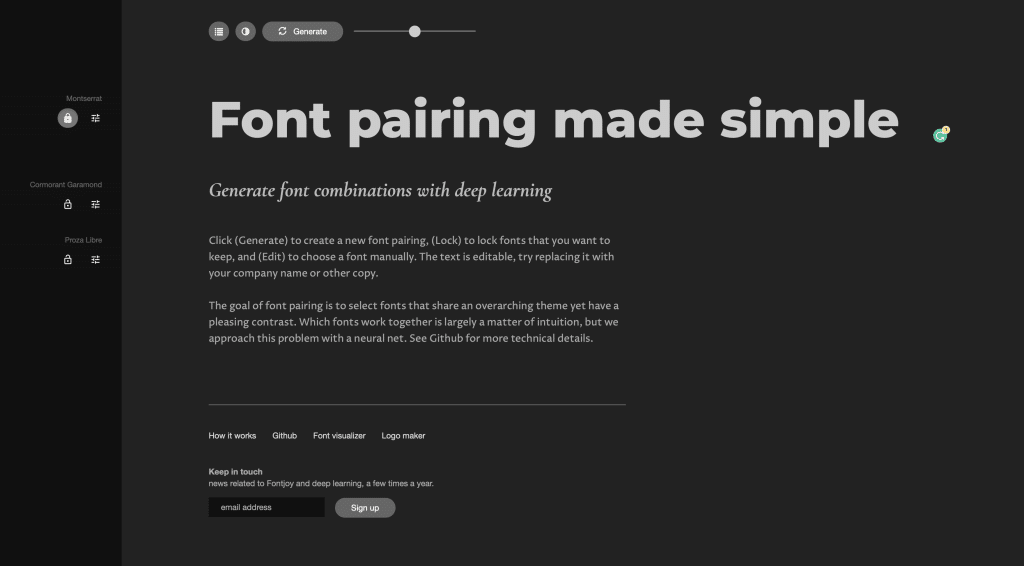TLDR Believe it or not, the fonts on your website are more than just a design choice; they’re a pivotal factor in your site’s SEO performance. How? By influencing readability, website speed, and mobile-friendliness, the fonts you choose can either propel your website up the search engine ranks or hold it back.
Unlocking the Power of Fonts in SEO
Ever wondered if the fonts on your website could be influencing its ranking on search engines?
This often-overlooked aspect of web design is a key player in your SEO strategy.
Today, we’re diving into the fascinating world of fonts and their impact on SEO.
Stick with me, and you might uncover some game-changing insights to boost your website’s performance.
Why Is Readability Crucial for SEO?
Readability isn’t just about making text easy on the eyes; it’s about engaging and retaining your audience.
The right font can mean the difference between a visitor who reads and interacts with your content and one who quickly bounces to a competitor’s site.
Different fonts come with varying levels of legibility, and choosing the right one can significantly impact user engagement.
For instance, a clean and simple font like Arial or Helvetica can make reading effortless, encouraging visitors to stay longer on your site.
On the other hand, a fancy script font, while attractive, might make reading a chore, increasing bounce rates and sending negative signals to search engines.
Remember, engaged visitors often mean better SEO rankings.
Do Fonts Affect Website Speed and Mobile Friendliness?
It’s not just about aesthetic appeal.
The type of font you choose can significantly impact your website’s loading speed and mobile friendliness – two critical factors in SEO.
Heavy, graphic-intensive fonts can slow down your page load times, frustrating users and harming your SEO. On the flip side, lightweight fonts contribute to a faster, smoother user experience, particularly on mobile devices.
Considering that mobile-friendliness is a ranking factor for search engines, optimizing your fonts for speed and responsiveness is a smart move.
Simple adjustments, like reducing the number of font styles and sizes used on your site, can lead to noticeable improvements in performance.
What’s the Ideal Font Size and Color for SEO?
Font size and color also play a role, albeit indirectly, in your site’s SEO. The goal is to choose a font size and color that is not only visually appealing but also functional across all devices.
For example, a font size that’s too small may be difficult to read on mobile devices, leading to a poor user experience.
Similarly, font colors should have sufficient contrast against the background to ensure readability.
A well-balanced combination of font size and color enhances the overall user experience, positively influencing your SEO. It’s about finding that sweet spot where aesthetics meet usability.
Just so you know I mean by finding the ideal font, just look at these examples.
Good Font Usage Examples:
- Vesper Hotel: Combines ornate Domaine Display with Proxima Nova for a fresh and distinctive look, enhancing aesthetic appeal and readability.
- Marie Guillaumet’s Website: Uses a handwriting-style font, creating authenticity and a cohesive design with handmade-style icons.
Poor Font Usage Examples:
- New Venture Scouting: Mixes four fonts (Jubilat, Open Sans, Proxima Nova, Arial) without clear rules, resulting in a cluttered and inconsistent design.
- United Strands: Relies solely on Montserrat, which lacks italics, leading to unappealing ‘false italics’ and a flawed typography design.
Source: https://webdesignerhut.com/good-bad-typography/
My advice on how to find the best font tools.
When selecting fonts for your website, aim for a balance between style and functionality. Choose a limited number of readable and web-optimized fonts to ensure consistency and fast loading times.
Always consider the overall user experience across different devices and screen sizes.
Here are my go-to tools for fonts:
Google Fonts: This is a comprehensive library of free, open-source web fonts. It allows users to easily test and implement different fonts on their websites. Google Fonts also provides information about the load time of each font, which is crucial for SEO.
WhatFont Tool: This browser extension helps users identify fonts used on websites. It’s useful for finding fonts that you see performing well on other websites.
FontJoy and TypeWolf: These tools help in font pairing, showing how different fonts work together on a web page – an important aspect of ensuring readability and user engagement.

Source: FontJoy
PageSpeed Insights by Google: While not a font-specific tool, it’s essential for testing how font choices affect your website’s loading time, a key factor in SEO.
Contrast Checker: This tool checks the color contrast of text against its background, which is important for readability and accessibility, impacting user experience and SEO.
Conclusion
In conclusion, your choice of font is more than just a stylistic preference; it’s a strategic SEO decision. By focusing on readability, website speed, and mobile-friendliness, you can leverage fonts to improve your SEO.
The digital world is all about the fine details, and the right font choice can set you apart
So go ahead, reevaluate your website’s fonts, and watch your SEO rankings climb!
Final Thoughts
And that’s a wrap on the often-underestimated impact of fonts on SEO.
With this knowledge, you’re now equipped to make informed typography choices for your website.
Remember, in the digital world, even the smallest details can have a big impact.



